Renovation Apartments Münster

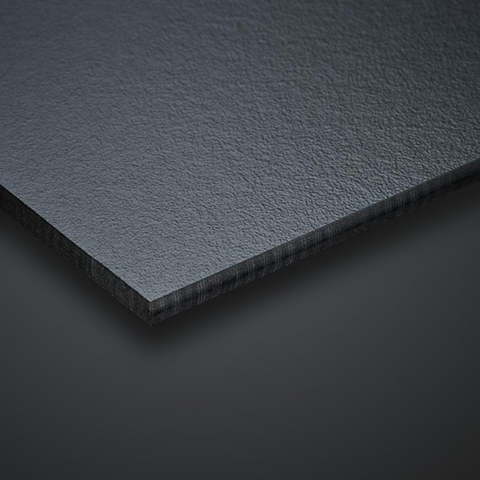


A renovation project that scores top marks in every category
In Münster, like many other German cities, old residential buildings still characterise large parts of the urban landscape. Comprehensive renovation of these buildings makes sense in several respects. Upgraded insulation performance is not the only urgent improvement required by these properties. The renovation work also needs to target improving the residents’ quality of life, creating a fresh and attractive appearance, preserving the building’s structural integrity in the long term and ensuring successful integration in the surrounding area.

Exemplary execution
The 68 homes in the three apartment buildings on Thomas-Morus-Weg in the Rumphorst district, which were recently renovated by Wohnungsverein Münster from the ground up, are an excellent example of what can be achieved.
The objective here was to reconcile costeffectiveness with attractive aesthetics and future durability. As is customary in large parts of North Rhine-Westphalia, these late-sixties buildings have brick facades. Consideration also had to be given to a specifc requirement for the university city of Münster: in cities with a large student population, the demand for rental properties is so high that they are subject to considerable price pressure. In the light of this, the housing association decided that the interests of its members would best be served by an approach that optimised quality of life for the residents, while keeping the rent increase resulting from the renovation work as reasonable as possible. So maximising cost-efciency during execution was a primary project objective.
Renovation projects involving buildings with brick façades are characterised by specific material-related challenges. Bernd Sturm, the managing director of the housing association, sums up the problem: “If you want to insulate the buildings and then rebrick them, you have to remove the old brick façade completely first. Te costs are punitive: up to 350 euros/m². The last-resort option is to use a composite thermal insulation system attached directly to the old brick façade, however, we try to avoid this for several reasons.” Clearly, an alternative solution was needed. “We used a ventilated façade system when renovating two eight-storey apartment blocks several years ago and were very pleased with the result,” Bernd explains. “So investigating the use of a system like this again was an obvious move. We used Trespa® Meteon® panels for that previous project and the result was outstanding. Put simply, the material is perfect for the job and the value-for-money aspect matched our requirements. The combination of a smooth surface and the wide range of colours and effects guarantees an appealing appearance. Furthermore, the panels are extremely robust - as confirmed by our own tests.”

Clear advantages
Norbert Sommer, the housing association's engineering manager, appreciates the building physics aspects of the ventilated wall system: “The façades are ventilated from behind, so moisture can be drained easily, which is beneficial for both the building's structural integrity and the indoor climate. We also wanted to achieve good insulation performance. Because the panels are thin and quite light, we were able to use 160 mm mineral wool without worrying too much about the structural loads. The only aspect that requires attention is how you position the fixed and sliding mounting points to allow for expansion of the Trespa® Meteon® panels and the aluminium support structure.”
The creative possibilities also appealed to Norbert Sommer: “You have a wide range of colours, surface textures and decors to play with. For example, we achieved a very pleasing effect by using panels with a wood grain decor in some places.”

Sustainability thanks to durability
Michael Ollegott, Trespa Germany's Area Sales Manager, who is obviously a strong believer in the design possibilities of his products, also emphasises the class-leading mechanical properties of the Trespa® Meteon® panel: “We use a high-pressure laminate for our façade panels. This material combines extremely high impact-resistance with excellent durability. In addition, the nonporous surface is easy to clean - even graffiti can be removed relatively easily.” He stresses the specific benefits of a highly robust façade for residential complexes and points out that even children playing football or carelessly parked bicycles cannot harm the façade. Michael Ollegott adds: “Obviously, other solutions for upgrading insulation performance exist and some of them cost less upfront. However, the fact that Trespa® Meteon® panels require very little maintenance is a telling advantage in the long term - especially when you consider that a Trespa façade has a life expectancy of at least 50 years. Other systems require regular repeat maintenance and comprehensive refurbishment will also be needed much earlier in some cases. When you take these aspects into account, the total bill looks much less attractive.”

Michael Ollegott also emphasises the benefits of the rational, economical and 'resident-friendly' installation method. “The aluminium support structure was attached directly to the existing brick façade, in line with the preliminary structural strength analysis. We then used colour-coordinated rivets to mount the panels. You can hardly see them and this fixing method is much cheaper than the concealed fixing method which was also considered as a possible alternative.
Like any other renovation project, the residents had to put up with some noise nuisance when the holes for anchoring the support structure were drilled in the brick façade. However, they were spared further nuisance in the form of dust, debris, dirt and building materials lying around the site, which are common side-effects of conventional building techniques. So this façade renovation approach was much more tenant-friendly.

A completely new look, which is also environmentally friendly
As the architect responsible for the project, Ingo Scheffer praises the “... wide-ranging design possibilities of Trespa® Meteon® panels.” And he also highlights the crucial sustainability advantages of this ventilated façade system: “When you opt for a composite external thermal insulation system, you have to accept an adverse ecological footprint in the long term. In this design, the insulating material, generally polystyrene or a rigid foam, is inseparably bonded to the other system components. As a result, cost-effective recycling is virtually impossible. By contrast, the ventilated façade system that we used for the Thomas-Morus Weg project can be completely separated by material type at the end of its life cycle and recycled. This is an important aspect in the context of today’s integrated building design approach.”
.jpg)
Because the housing association was receptive to audacious combinations and effects, Ingo Scheffer was able to play with unusual colour and surface variants to create a striking visual appearance. “Münster is a brickwork façade stronghold, so you can’t always disregard this characteristic look when submitting architectural designs for renovation projects. However, these three buildings were not subject to this constraint, so we made the most of the resulting design freedom.”
The architect wanted to preserve or even emphasise the identity of the original structure while at the same time creating an original, high-quality appearance that not only looked aesthetically appealing but also enhanced quality of life for the residents. He achieved this through strong differentiation of the surfaces, projections and recesses in the building façade by using contrasting Trespa® Meteon® panels in metallic and uni colours, in alternation with highly individual and powerful colour accents. He also made selective use of a wood decor to highlight the stairwells at the front of two of the buildings.
New bicycle shelters and storage compartments clad in the same material as the façades are the finishing touch. Ingo Scheffer sums up the project as follows: “I really like Trespa® Meteon® panels because they let you playfully integrate different visual elements into the overall design. Use of a composite external thermal insulation system would have made it technically impossible to integrate attractive accents while still maintaining material uniformity, as we did here. A similar overall result could have been achieved with an aluminium cassette system, but the level of effort and expense would have been much higher. Opting for the Trespa solution meant that we were able to implement our design concept coherently, consistently and in a cost-conscious manner.”
“It was refreshing to work with a client who welcomed this diversity of colours and surfaces. Tanks to the information and support provided by Trespa’s representative, Mr Ollegott, we very much enjoyed the task of producing all the detail drawings for this project. The overall design is beautifully balanced: all those involved in the project are highly satisfied with the result and the tenants are also very enthusiastic.”
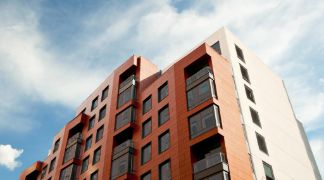
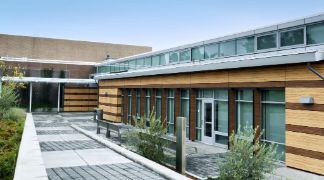
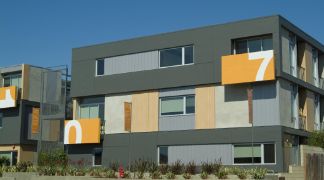
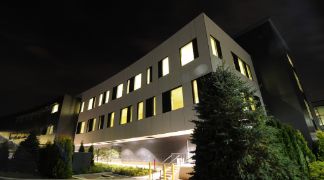
 EN/GB
EN/GB
















